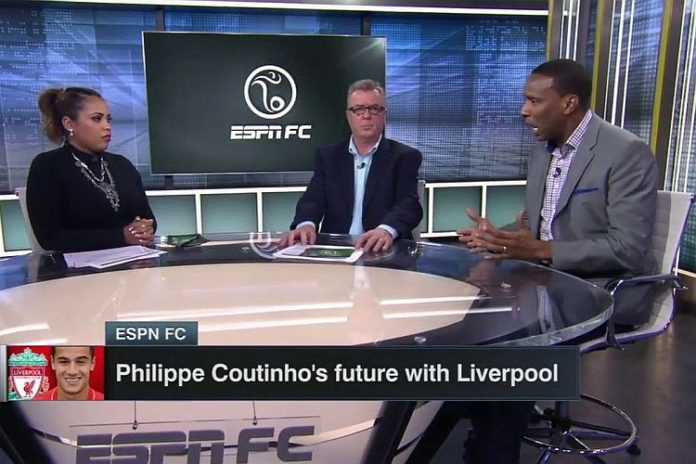USA Swimming’s (fairly) new chief executive, Tim Hinchey, released a “State of the Sport” post on the organization’s Web site on 19 September and for incurable Olympic-sport junkies (like me), it made for fascinating reading.
Hinchey, you may remember, made one of the best impressions at the multiple Congressional hearings earlier this year into the sex-abuse scandals which have rocked U.S. Olympic sport and – for swimming – reaches back 20 years or more. He acknowledged the issues and also pledged more money for the U.S. Center for SafeSport, a catalyst to last week’s agreement by all of the U.S. National Governing Bodies to give a collective $1 million more to the Center.
Hinchey’s primary focus in his Web message was about athlete safety and security. “More than anything, this last year has shown us that better education continues to be necessary both to raise awareness of current programs and services and create more abuse prevention champions within every rank of our membership. Our goal is to provide the best possible experience for our members, in the safest possible environment, and we will continue to be leaders in this movement across all national governing bodies and the Olympic community.”
That’s important. Hinchey also noted “personal face-to-face meetings with survivors of abuse,” and “the development and implementation of the Safe Sport Recognized Club program,” which will bring the SafeSport Code and practices to the local level, which is where safety needs to start.
But that is only part of USA Swimming’s future. Hinchey went into considerable detail on planning that is looking as far forward as 2028 and the desire “to find new ways to grow our membership, improve the welfare of our athletes and expand our fanbase.”
To that end, Hinchey explained that “an internal mantra that we have adopted [is] to raise the level of our national events to be closer to the presentation and pageantry of the U.S. Olympic Trials.
“Anyone who has ever attended a major swimming competition such as the U.S. Olympic Trials will understand the unparalleled in-venue entertainment and excitement of watching incredible athletes push themselves to the limit and lay everything on the line. Creating additional Trials-like events elevates the experience for both the athletes and the spectators. Our strategy is to enhance existing USA Swimming events and offer greater fan experiences, elevated viewing opportunities, increased promotion, increased grassroots initiatives, and more, similar to what people experienced and enjoyed throughout the spring and summer.”
So, USA Swimming sent inquiries around the country to obtain interest in staging legs of its Tyr Pro Swim Series events. The response was good and the new schedule will be announced in October; the first meet will be at the 1,284-seat Jones Aquatic Center in Knoxville, Tennessee from 9-12 January.
This is good, but bells, whistles and fireworks – like at the Trials – is not going to make the difference for swimming, or any of the other Olympic sports who want to make their events more important to more people.
What makes the Olympic Trials special is that it’s the selection event for the U.S. Olympic Team. That drama is why the event is a standard-bearer for swimming, track & field and gymnastics – among others – because the outcome is so meaningful to the athletes and to the country.
How important is the Tyr Pro Swim Series? Not very, at least to the athletes. After the Indianapolis stop in May, five-time Olympic gold medalist Nathan Adrian said “what we use these meets for is honing in on how we’re going to approach the race. Playing around and experimenting is also what makes it fun so we’re doing a little bit of that – just doing our best to not let it get stale.”
The issue was put perfectly by long-time bid guru Terrence Burns (USA) at the FINA World Water Polo Conference last April. Speaking about water polo – but equally applicable to any sport that’s looking for growth – he said, “Before talking about promotional tactics, we should go way back. I think that you have to create a strong brand narrative, a real story about water polo. You need to identify why it is important to the consumers and the fans. And then the tactics follow.”
USA Swimming has the same desire, but the “why” is not there yet for anything other than the U.S. Championships, which were sold out at 3,000-plus per day at Irvine in July.
Don’t get me wrong; I’m a fan of Hinchey from what I have seen so far and USA Swimming has proven itself over and over again as one of the best – if not the best – of the U.S. National Governing Bodies. It’s promotional work and video programming is outstanding.
But a season-long narrative which ends in a championship event is what propels not only the big team sports in the U.S. and elsewhere, but what keeps people talking about it! And what swimming needs is for more people to talk about it.
Like on a weekly, 30-minute show about Olympic sports on ESPN, Fox and NBC similar to the terrific “Winter Games Daily” show NBC did with Jimmy Roberts, or the ESPN FC show that supports its soccer programming.
And stop missing opportunities to own the spotlight, like selecting 21-28 June 2020 for the swimming Olympic Trials, at the same time as the track & field Trials from 19-28 June, in Eugene. Oy.
Rich Perelman
Editor


















